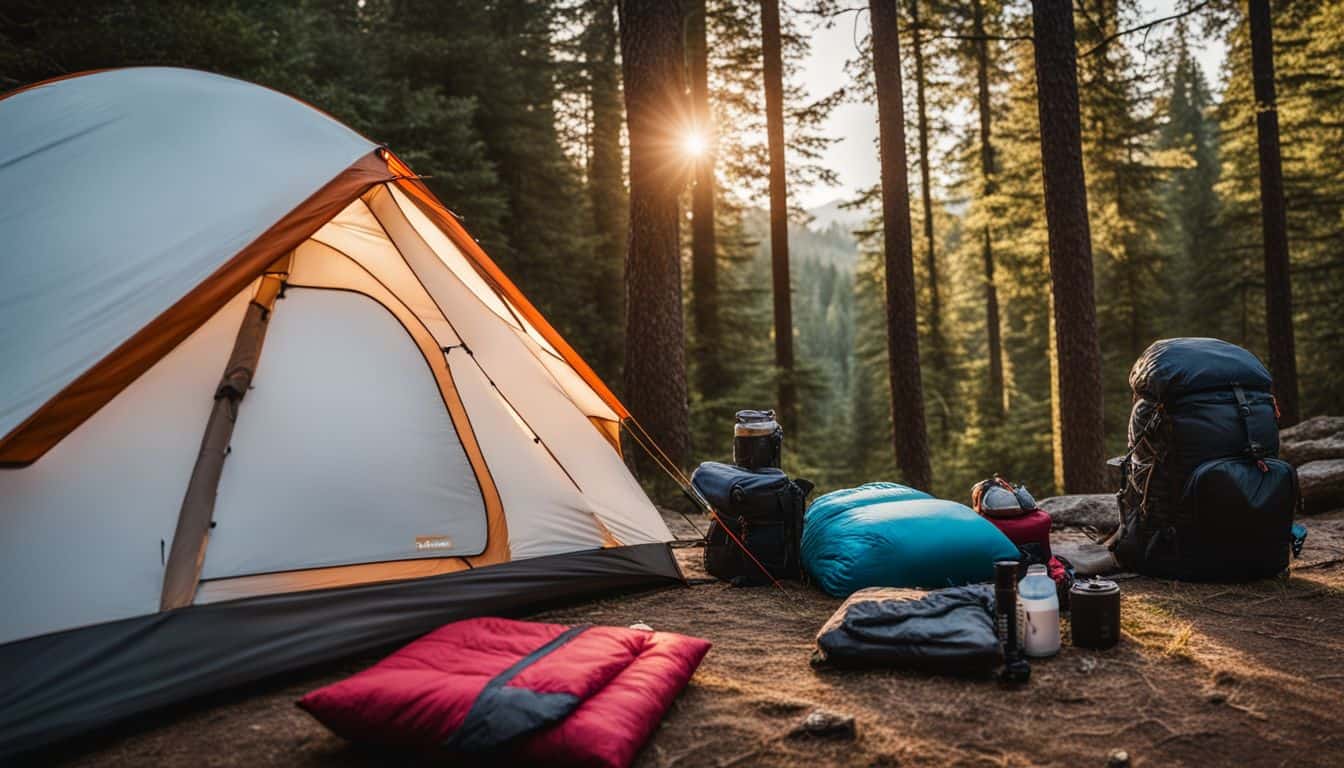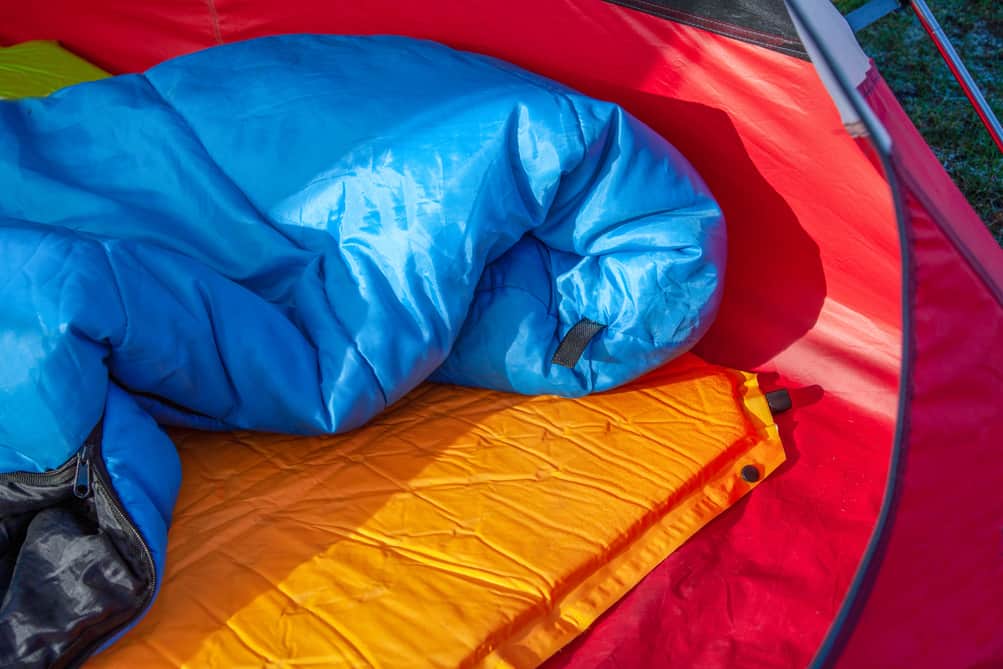Few pieces of gear are as crucial as your sleeping bag when it comes to outdoor adventures. The materials used in its construction can make the difference between a cozy night’s sleep and a miserable, shivering experience. This comprehensive guide will help you navigate the world of sleeping bag materials, ensuring you choose the perfect outdoor cocoon for your next camping trip.
Understanding Insulation Types
The heart of any sleeping bag is its insulation. Let’s explore the three main types in detail:
Down Insulation
Down insulation, derived from goose or duck plumage, is nature’s premier insulator. Its exceptional warmth-to-weight ratio makes it a favorite among backpackers and mountaineers. Down is measured by fill power, typically ranging from 500 to 900+. Higher fill power indicates better loft and insulation properties.
One drawback of traditional Down is its poor performance when wet. However, modern hydrophobic down treatments have significantly improved its water resistance, making it more versatile in damp conditions. These treatments involve coating the down clusters with a water-repellent substance, allowing them to maintain loft and insulation properties even when exposed to moisture.
Synthetic Insulation
Synthetic insulations are made from polyester fibers designed to mimic the properties of down. They come in two main types: short-staple fibers that feel more like down and long continuous filaments that are more durable.
The primary advantage of synthetic insulation is its ability to retain warmth when wet. It’s also generally less expensive than down and easier to care for. However, it’s bulkier and heavier for the same warmth rating. Recent advancements in synthetic insulation technology have led to the development of materials closer to Down’s warmth-to-weight ratio while maintaining synthetic’s moisture-resistant properties.
Wool Insulation
While less common, wool insulation is gaining popularity due to its natural properties. Wool regulates temperature effectively, wicking moisture away from the body while retaining warmth. It’s also naturally odor-resistant, making it an excellent choice for extended trips. Merino wool, in particular, has gained traction in outdoor gear due to its softness and superior performance.
Shell Materials
The outer shell of your sleeping bag plays a crucial role in protecting the insulation and contributing to overall performance.
Nylon vs. Polyester
Nylon and polyester are the most common shell materials. Nylon tends to be more durable and abrasion-resistant, while polyester is often less expensive and dries faster. Both can be treated with DWR (Durable Water Repellent) coatings to enhance water resistance. The denier (thickness) of the fabric also plays a role in durability and weight, with lower denier fabrics being lighter but potentially less durable.
Specialized Fabrics
Some high-end sleeping bags incorporate specialized fabrics like Gore-Tex or other breathable membranes. These materials offer exceptional water resistance while allowing moisture vapor to escape, preventing condensation inside the bag. While these fabrics add to the cost of the sleeping bag, they can significantly enhance performance in challenging conditions.
Lining Materials
The lining of your sleeping bag touches your skin, so comfort is key. Popular options include soft polyester taffeta and brushed fleece. Some bags feature moisture-wicking fabrics to help keep you dry throughout the night. The choice of lining material can significantly affect the perceived temperature of the bag, with softer materials often feeling warmer.
Innovative Material Combinations
Modern sleeping bags often combine different materials to optimize performance. For example, some bags use synthetic insulation in areas prone to moisture (like the foot box) and down in the core for maximum warmth and compressibility. This hybrid approach allows manufacturers to create bags that perform well in a broader range of conditions.
Environmental Considerations
As outdoor enthusiasts, it’s essential to consider the environmental impact of our gear. Many manufacturers now offer sleeping bags made with recycled materials or sustainably sourced Down. When choosing a down bag, look for certifications like the Responsible Down Standard (RDS). Some companies are also developing innovative insulations made from recycled plastic bottles or other sustainable sources.
Material Performance in Different Climates
Your camping environment should heavily influence your choice of sleeping bag materials. For cold weather, high-loft down or advanced synthetic insulations are ideal. In humid or tropical climates, consider bags with excellent moisture management properties. Some bags are designed with zippered vents or convertible features to adapt to changing temperatures throughout your trip.
Care and Maintenance
Proper care can significantly extend the life of your sleeping bag. Down bags require special care when washing, while synthetic bags are generally easier to clean. Always follow the manufacturer’s instructions for cleaning and storage. Proper storage is crucial, especially for down bags – store them uncompressed in a large, breathable bag to maintain loft.
Choosing Materials Based on Camping Style
Your camping style should guide your material choices. Ultralight backpackers might prioritize the exceptional warmth-to-weight ratio of high-fill-power down, while car campers might opt for the durability and easy care of synthetic materials. Consider factors like average trip length, typical weather conditions, and how often you’ll be compressing and unpacking your bag.
Future Trends in Sleeping Bag Materials
The world of sleeping bag materials is constantly evolving. Look for advancements in sustainable insulation, ultra-lightweight fabrics, and even smart sleeping bags that adjust to your body temperature. Some manufacturers are experimenting with aerogel insulation, which offers excellent insulation with minimal weight and bulk.

Conclusion
Choosing suitable sleeping bag materials is crucial for a comfortable and safe outdoor experience. You can select a sleeping bag that perfectly suits your needs by understanding the properties of different insulations, shell materials, and innovative combinations.
Remember, the best sleeping bag for you depends on your specific camping style, climate, and personal preferences. Remember to consider the shape of your sleeping bag, as this can significantly impact your comfort and warmth. Whether you opt for a traditional mummy bag, a spacious rectangular bag, or something in between, the materials used will play a crucial role in your sleeping bag’s performance.

Leave a Reply